 |
Norrmalm - The center of the tertiary sector

The centre of Stockholm, the district Norrmalm, represents the economical centre. Beside numerous office buildings there are an abundance of shops, a nice, wide Pedestrian area, several museums and a few very nice sightseeings as the Royal Sepulture Church, the Riddarholmskyrkan that is located on the small city island.
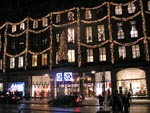
By looking from Gamla Stan to Norrmalm, the first eye catcher is the Royal opera building, that is located in Strömgatan. In the neoclassical building that was finished in the year 1898 and where there are exclusively operas and ballet acts on the program. Not far away by walking a little up the Malmtorgsgatan, there is a culture house, a massive glass palace and the city theatre. In front of it, there is the Sergels Torg, a big plaza with a massive fountain in the centre; At the end of the Plaza there are the T-Centralen, the main station of the subway network.
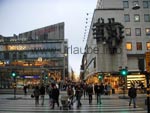
Now, it is only a little piece to walk up to the pedestrian zone, the Drottningsgatan, that on one hand leads to the island Gamla Stan and on the other hand ends at the Strindbergsmuseum. Shops as far as the eye can reach, and as a shopping trip somehow belongs to a city trip, one is here in good hands. In the evening hours when the shops close, one has to search a little Norrmalm in order to find some vibrant live. Beside the main station and the central station of the subway it seems to be in many places as the streets are deserted. but one has simply to know where to go.
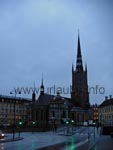
We tried asking the people, and it works very well to ask the people of the streets in English. Once the first location that one likes is found, it is possible to get a tip for the next location. Anyhow, the reaction is not unfriendly but just the opposite, one finds helpfullness whereever one goes to; The best unusual addresses for going out are anyway not in the arterial roads, but a little apart of the side streets. Thus, it is worthwhile to ask.
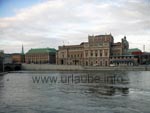
During the christmas time, the city district Norrmalm splashes out also concerning the illumination. The whole front of the main station is brightly illuminated and always moving, and it is the same with the department stores and shops in the pedestrian area and the shopping mile Drottningsgatan, that forms a sea of lights. To the contrary, the buildings in Norrmalm could not be more different. Here, some historical buildings that are mainly located at the main traffic roads and waterways, come together with some modern glass and concrete fronts where the trade and service sectors are hidden. But the mixture is, apart of some exceptions, very successful, as specially in the area of the centred islands it has been made sure that no high-rise buildings spoil the cityscape.
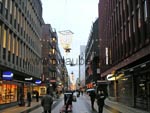
Anyhow, the 60ies and 70ies barely spoiled the centre of Stockholm, as also the forcing house and its outside complex form an architectural unit that stands for a determined epoch. As in nearly all big cities, in Stockholm, the architectural sins are rather located in the outlying districts and were originated in the course of the city expansion. Satellite cities, and Stockholm belongs also to them, are the areals of any big city that the city planers would like to cancel as soon as possible. But this is the reason why the districts of Stockholm have an own topic. In Norrmalm, it is the trade, in Djurgarden the nature and the leisure time, in Gamla Stan the medieval times and so on, and thus there are residential areas, industrial areas and harbours.
Back to the index Stockholm

Author: Ingo Schmidt; Copyright: Patrick Wagner, www.tourist-guide.biz
|
 |